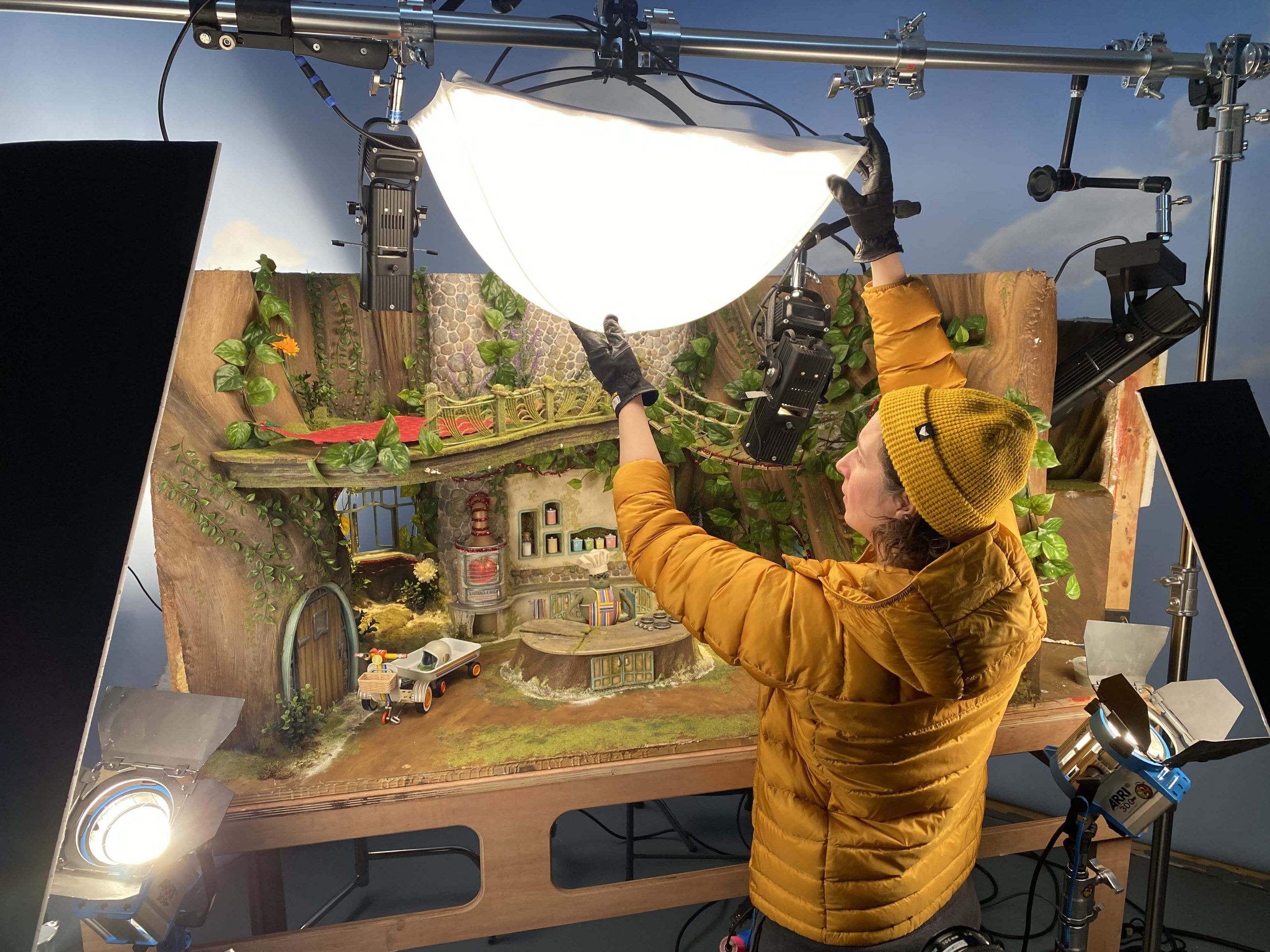Editor’s note:
Starting life on a garden tree stump, Tiny Chef set out to create the world’s tiniest dishes for the world’s tiniest cooking show. On a mission to help children find their passion for cooking, he took to Instagram with a series of short (but very sweet) stop-motion videos.
With his in-depth knowledge and boundless charm, he quickly amassed a following of die-hard fans, and it wasn’t long before Nickelodeon came calling for their own taste of the Tiny Chef.
Now a critically acclaimed and wildly popular TV series, “The Tiny Chef Show” is the kids’ cooking program bringing stop-motion to a whole new generation.
We asked Cinematographer and Tiny Chef DOP Ozlem Akturk (Ozi) to explain some of the challenges faced during production and how they were overcome.

Working as a cinematographer on The Tiny Chef Show has been both challenging and rewarding. The stop-motion animation process is often underestimated in the amount of work and time that goes into producing a final product.
Despite the challenges of pre-production and shooting during the pandemic, we completed production and post-production by the end of June 2022. The TV Show premiered September 9th, 2022, in the US and was subsequently released in the UK.
The concept behind “The Tiny Chef Show” is that he is a real being in our world. We wanted to bring Chef’s social media presence into the TV show by incorporating elements from his social accounts, including him interacting with real humans.
Here are some of the hurdles we faced:
A race against time.
One of the biggest challenges was time management: we needed to shoot very fast and had only a year to do the actual production. We decided to replicate his kitchen set four times to work efficiently, but that meant we needed to maintain consistency across all four replicas, lighting and continuity-wise with dressing and the characters.
The first kitchen set was our playground; here, we could figure out where to put practicals and plan the light set-up. Afterwards, we had to transfer the same rig to the other kitchen sets to identically match across all the locations.
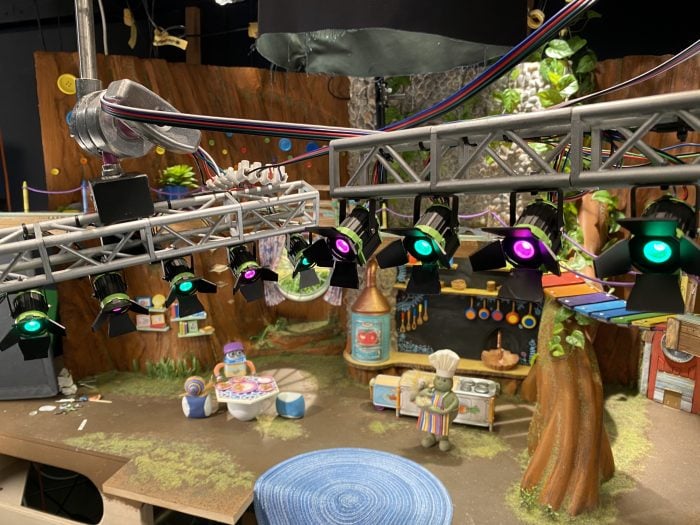
Miniature workspace for a Tiny Chef.
Stop-frame animation requires exceptional detail to achieve realism, which can be especially challenging due to the constraints of miniature sets and limited workspace.
Shooting in small, isolated units – between 150-300 square feet – while maintaining complete darkness to prevent light leaks and flickering requires precise planning and organization. The sensitivity of stop-frame animation, which captures each frame individually, makes it much less forgiving than live action, as any change or disruption is immediately visible.
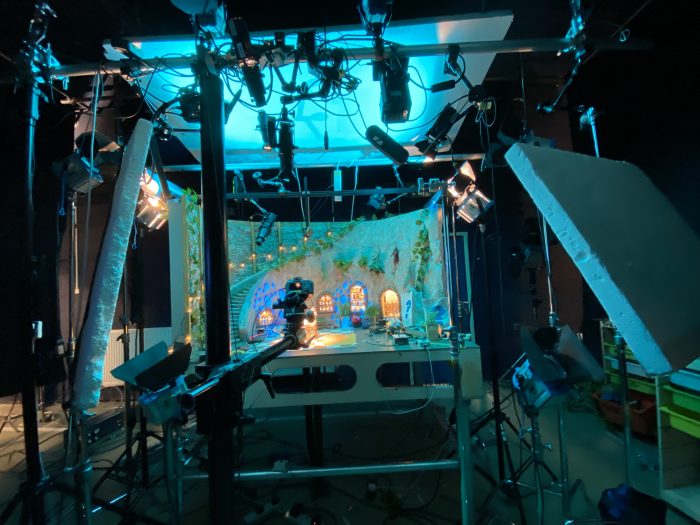
Setting up lights, bounce boards, the camera and the computer while ensuring enough space for the animator is also very demanding. It’s essential to ensure the animator’s comfort, as they may spend weeks or even months in a small unit, moving the puppet frame by frame.
Furthermore, complex shots with multiple characters or elements can significantly increase animation time and decrease the animator’s daily output.
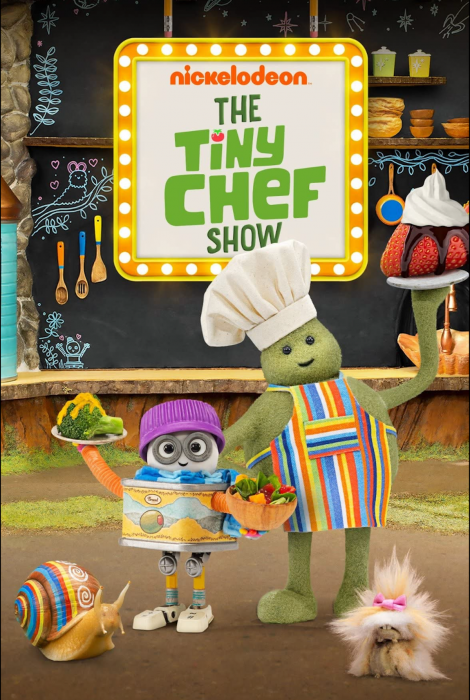
Avoiding accidents.
Maintaining the stability of lighting equipment is crucial in stop-motion. Any change is noticeable and can result in a costly reshoot. To prevent this, measures such as putting kick plates around the feet of the light stands and cameras are taken to minimize the risk of equipment being booted unconsciously. Despite these precautions, it’s not uncommon in a tight space for equipment to be accidentally knocked by the animator or art department during the animation process.
In such cases, the director may choose to reshoot or approve cutting to a different angle to salvage the shot.
Artificial daylight.
The live-action sets presented a unique challenge, specifically the exterior tree stump set, which had a limited space of 600 square feet. One of the major challenges we faced was simulating daylight in this confined space, as the ceiling height was insufficient to support our vision. This required our team to be resourceful and develop innovative solutions to make the most of the limited space.
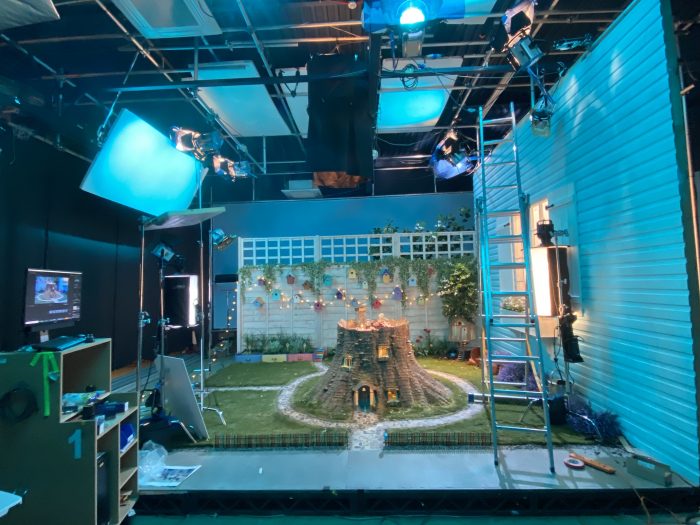
Exterior stump with lighting setup for nighttime.
A unique look.
“The Tiny Chef Show” is a preschool series that aims to entertain children and educate the young audience. As a cinematographer, I wanted to bring a unique visual style to the show by breaking away from the traditional approach of having everything in focus.
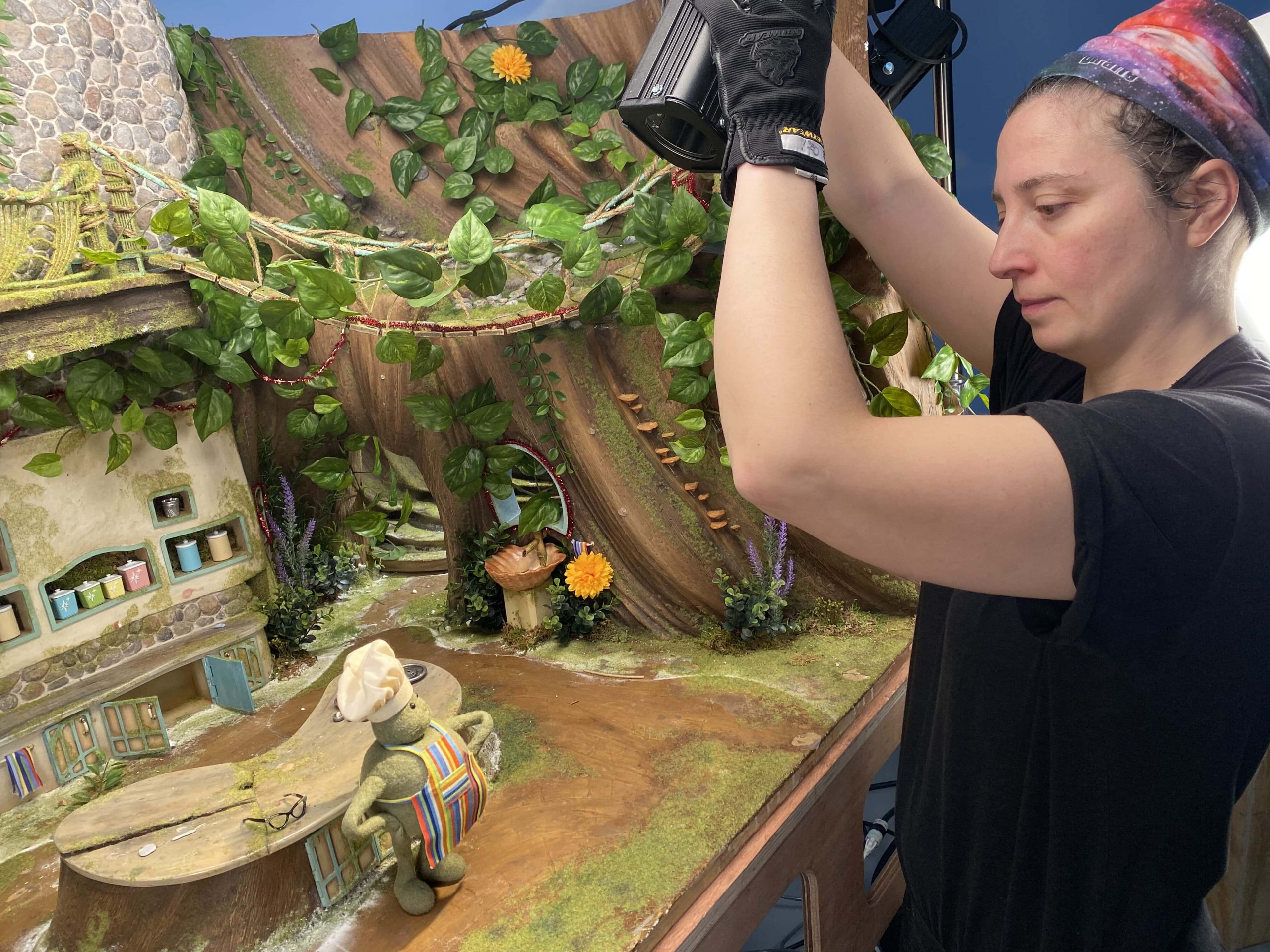
I decided to create a more cinematic look to make the animation more engaging for both younger and more mature viewers. I achieved this by using tighter lenses ranging from 55mm to 105mm and apertures between 4 and 5.6. This allowed me to create a sense of depth in the shots by keeping the background out of focus whenever the scene allowed.
Close-ups.
Because of the nature of the show, we needed to capture close-up shots of the food and the cooking. Not all lenses are capable of maintaining their focus that close to an object, though, especially when it’s miniature. We had to use macro lenses, including one of my favorites, the Nikkor 105mm micro, which is an excellent lens for filling the frame and getting the object sharp. There were a couple of occasions where we needed to be even closer, but thanks to the use of diopters, we were able to achieve the desired shot.
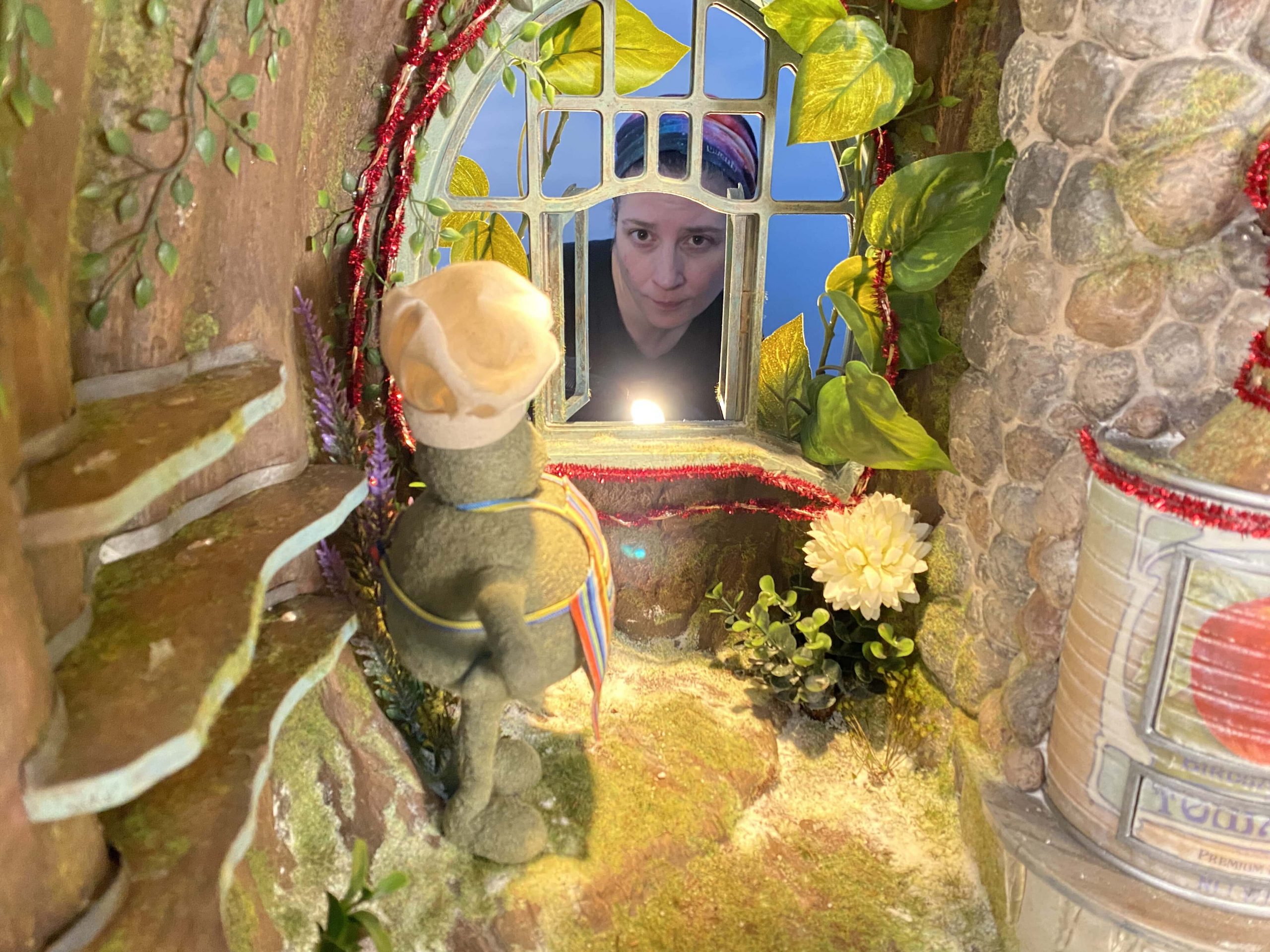
Takeaways.
As a cinematographer, I thrive on the challenges that come with new work. It is always a learning process and allows me to constantly push my creative boundaries. Stop-motion productions, in particular, present a unique set of challenges that keep me on my toes. From the technical aspects of lighting and camera work to the artistic consideration of storytelling and visual style, there is always something new to explore.
Each shot is a new opportunity to push the limits of what is possible and find ways to make the stop-frame animation more realistic and engaging. The excitement of overcoming obstacles and finding solutions to problems is what makes my work as a cinematographer truly rewarding.
